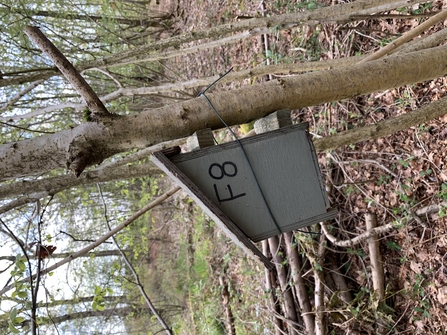As I have mentioned in previous blogs there are plenty of opportunities to get involved with surveys and monitoring during our traineeship; such opportunity came recently when I had the chance to help out with a dormouse survey at Monkwood nature reserve.
In the UK the hazel dormouse is classified as 'vulnerable'. They are mainly distributed in the southern counties of England and prefer deciduous woodland, although they can be found in coniferous and mixed woodland too. Dormice eat a wide range of foods including leaves, flowers, pollen, nuts, fruits and insects; it is said that the presence of dormice correlates to a healthy woodland ecosystem.
Dormice hibernate through the winter and they don’t normally become active until late April and May. Our survey occurred in April so we knew that our probability of seeing any dormice were slim (they hibernate at ground level rather than in boxes, which is why it's important to keep dogs on leads all year round when visiting our nature reserves). There was a chance, however, as the recent cold nights meant that it wasn’t out of the question for a dormouse to become torpid (a.k.a. go into ‘sleepy mode’) to conserve body weight – an important process for an animal of this size in cold weather – and they would need to find shelter safe from predators in order to to do this.


